#pluteus
Text




Verschiedenfarbiger Dachpilz, Pluteus plautus 05.09.23
#mushrooms#pilze#mycology#fungi#wild fungi#mushrooms switzerland#pilz#mushrooms of switzerland#pilzesuchen#basidiomycota#pluteus#dachpilz
211 notes
·
View notes
Text

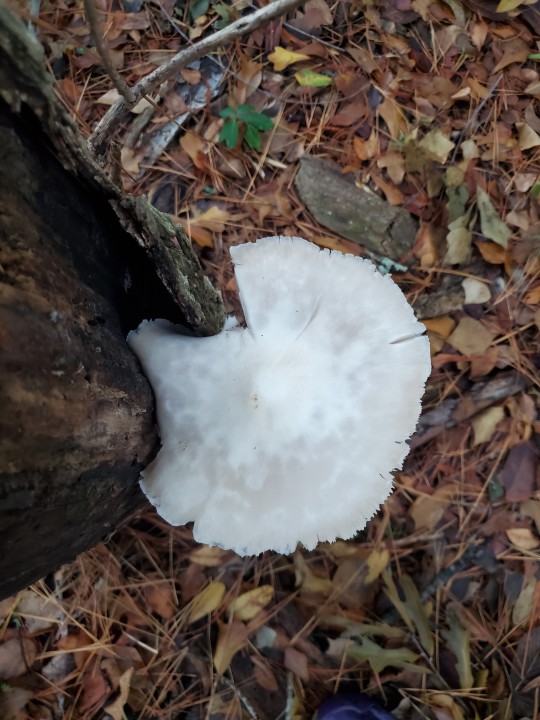






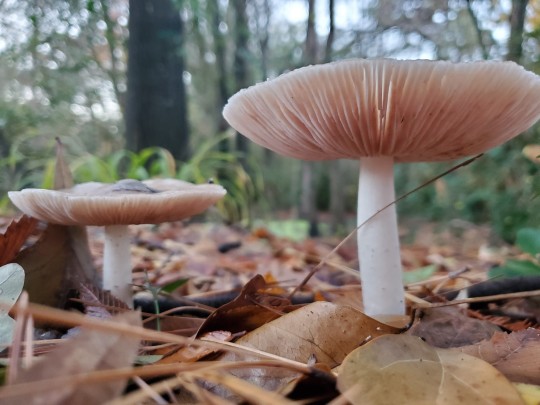

Scaly shield 》 Pluteus petasatus
This little friend group surprised me as I was leaving the park on Christmas eve. Big fella in the stump was at least 6" across!
They were a difficult ID and it is very possible that I'm wrong but the scaly shield made the most sense. Morphology can often vary quite a bit among individuals of some species and some can only be accurately distinguished microscopically by looking at their spores.
Southeast Texas, 24 Dec. 2023
#amatuer mycology#mushroom hunting#mushrooms#mycology#wild fungi#fungi#mushrooms of texas#texas mushrooms#fungi of texas#fungarium#foraging#fungus#fungi identification#wild mushrooms#mushroom#mushroom identification#scaly shield#pluteus#species identification#mushroom species#special interest
32 notes
·
View notes
Text

Deer mushroom
Pluteus sp.
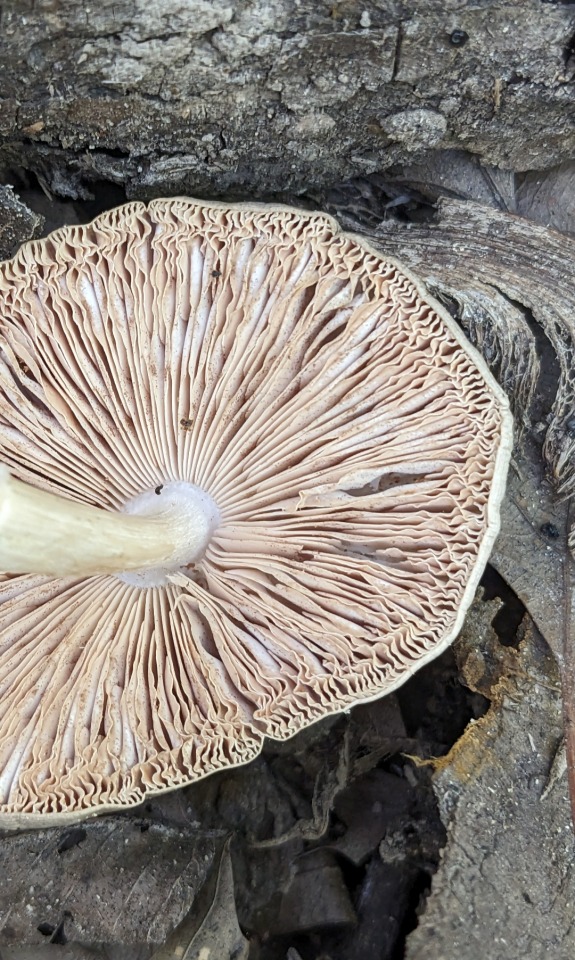

Aug. 18th, 2023
Growing in old growth bottomland woods.
Arnold, Jefferson County, Missouri, USA
Olivia R. Myers
@oliviarosaline
#nature#mushrooms#mushroom#woods#mycology#forest#forest floor#fungi#wild mushrooms#Ozarks#mushroom photography#fungi photography#exploring the woods#old growth forest#pluteus#deer mushroom#fairy core#fairycore#cottagecore#cottage core#naturecore#forest core#mushies#mycoblitz#the ozarks#exploring#pluteaceae#agaricales
15 notes
·
View notes
Photo

2022_05_14
18 notes
·
View notes
Text


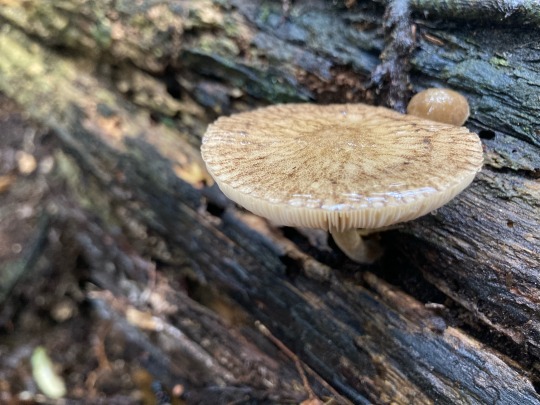

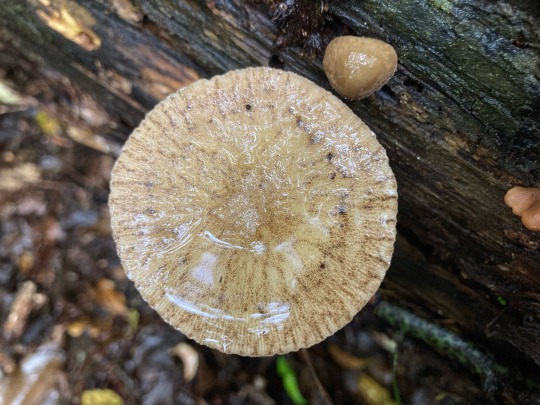


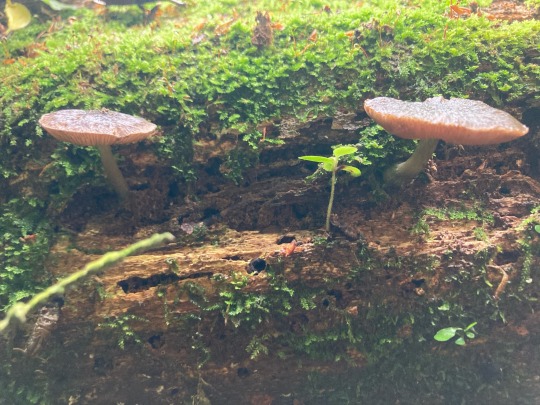
Deer mushrooms. Various Pluteus sp. Aotearoa
Photo credit me
3 notes
·
View notes
Text

Pluteus cervinus - The Deer Mushroom +12p
Habitat: Growing usually from rotting wood. If seen growing from the ground, assume it is growing from buried rotting wood. Grouped or solitary and can be found throughout the picking season
Edibility: Edible! Smell and taste resembles raw radishes. Eat raw or cooked.
Spore Color: Pink, or flesh-colored
Gill Color: Starting white and maturing to pink, or flesh-colored
Cap Color: Dark brown and tan, resembling the fur of a deer.
I need to know more!
#deer mushroom#pluteus#pluteus cervinus#pnw#pnwmushrooms#mushroom#mushrooms#shrooms#mushroomsonline#foraging#nature#environment#pacificnorthwest#mushroom hunting
1 note
·
View note
Text
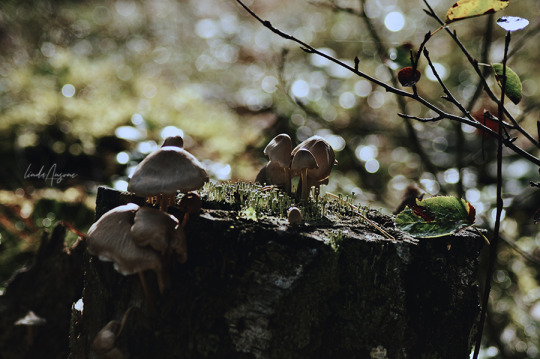

#mushrooms#fungi#lichen#cladonia#Pluteus cervinus#i think#forestcore#forest floor#naturecore#original photographers#nature photography#photographers on tumblr#mushroom photography
332 notes
·
View notes
Text
FOTD #064 : fawn mushroom! (pluteus cervinus)
the fawn mushroom (or deer mushroom / deer shield) is a saprotrophic fungus in the family pluteaceae. it is found on rotten logs, plant roots & tree stumps (but can also grow on all sorts of woody debris) & is found on pretty much every continent.
the big question : can i bite it??
technically, yes !! this mushroom is edible, but some people consider it poor quality for eating.
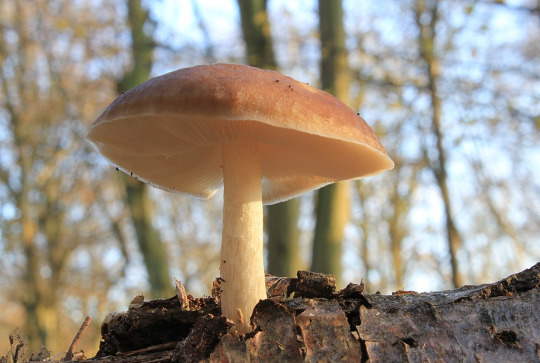

p. cervinus description :
the cap ranges from 3–12 cm (1+1⁄8–4+3⁄4 in) in diameter. initially it is bell-shaped, & often wrinkled when young. later it expands to a convex shape. the cap can be deer-brown, but vary from light ochre-brown to dark brown, with a variable admixture of grey or black. the centre of the cap may be darker. the cap surface is smooth & matte to silky-reflective. the cap skin shows dark radial fibres when seen through a lens, indicating that the microscopic cuticle structure is filamentous. the gills are initially white, but soon show a distinctive pinkish sheen, caused by the ripening spores. the stipe is 5–12 cm long & 0.5–2 cm in diameter, usually thicker at the base. it is white and covered with brown vertical fibrils.
[images : source & source]
[fungus description : source]
"i only recently learnt about this mushroom & it's SO CUTE !! i really love the first picture; it's beautiful."
#• fungus of the day !! •#[pluteus cervinus]#: deer mushroom :#: fawn mushroom :#: deer shield :#064#||#fungus#mushroom#mycology#mushrooms#cottagecore#fungi#earth#nature#forestcore#foraging#pluteus cervinus#deer mushroom#fawn mushroom#deer shield#fotd#fungus of the day
102 notes
·
View notes
Photo

Little guy on a mushroom cap--springtail I think...
Western Washington, April 23, 2022
Mary Howerton (shop)
#insects#springtail#mushrooms#fungi#fungus#toadstool#mycology#entomology#pluteus cervinus#dirtcore#mosscore#nature#forest floor#forestcore#naturecore#original photography#photographers on tumblr#nature photography#goblincore
3 notes
·
View notes
Text
Wet Beast Wednesday: brittle stars
Some animals end up living in the shadows of others. Everyone knows about starfish, the famous branching echinoderms, and a lot of people know about brittle stars, but not as many people know that brittle stars aren't starfish, they're their own thing. But because they look similar, brittle stars are frequently mistaken for a type of starfish, rather than being recognized as their own animal. I aim to help these stars shine and be recognized as their own animal.

(Image ID: a green brittle star on a rock. It consists of a small, round central body with five long, slender arms arms emerging from it at equal distances from each other. Thea rams are lines on either side with small bristles. End ID)
Brittle stars are members of the class Ophiuroidea, which is closely related to Asteroidea, the true starfish. The name comes from the Greek "ophis", meaning "serpent", a reference to their long, skinny arms. Ophiuroidea is divided into two orders, Ophiurida (true brittle stars) and Euryalida (basket stars). As with all echinoderms, brittle stars are radially symmetrical, consisting of multiple body segments that radiate around a point, akin to the slices of a pizza. The majority of brittle star species have five segments, though a few have six or more. Similarly to starfish, brittle stars have their arms radiating out from a central disc. In brittle stars, all the organs are located in the disc and as long as the disc remains intact, the arms can be regrown. The mouth (which also functions as the anus) is located in the center of the disc and each body segment has a single jaw and tooth. Some starfish can regenerate into two animals if the disc is cut in half, but almost no brittle stars can survive being cut in half. That being said, some species can reproduce via fission, where the disc splits in half and each half regenerates into a fully-grown star. In brittle stars, the arms are narrower than the disc, making the disc much more visually distinct than in starfish, where it can be hard to tell where the disc ends and arm begins. The arms of a brittle star are slender and highly flexible. When in danger, a brittle star can sever one of its arms. This is usually done in response to predation, in hopes that a predator will opt to eat the arm while the star makes its escape. This is called autotomy and is the reason why the common name of these animals is brittle star. The arms are formed of multiple calcium carbonate plates called vertebral ossicles due to their resemblance to vertebrae. The ossicles are connected to each other by ball and socket joints, allowing for a great degree of flexibility. Most true brittle stars can flex their arms side to side, but not up and down, while basket stars can flex in all directions. In basket stars, the arms branch multiple times. Unlike starfish, brittle stars use their arms for locomotion. The arms move in a rowing motion to drag the star around. Some species can swim for short distances as well. By contrast, starfish (and urchins) move using tube feet. Tube feet are a common echinoderm trait and consist of small tubes with a sucker on one end that are inflated and moved with water pressure. Most echinoderms use their tube feet for movement and feeding. True brittle stars, by contrast, seem to use their tube feet primarily for sensory reception, though they are also used to help transport food to the mouth. Due to moving with their arms instead of tube feet, brittle stars are capable of much faster movement than starfish, though in short bursts. Like other echinoderms, brittle stars use a water vascular system, where water is drawn into the body and used to inflate and move the tube feet and as a substitute for blood. Brittle star reproduction is fairly standard for echinoderms. The males and females will release their gametes into the water column. Fertilized eggs develop into pluteus larvae, which swim using cilia. In the pluetus stage, echinoderms are bilaterally symmetrical. They become radially symmetrical during metamorphosis into the juvenile form.

(GIF ID. A pale white brittle star swimming by rapidly moving its legs. End ID).
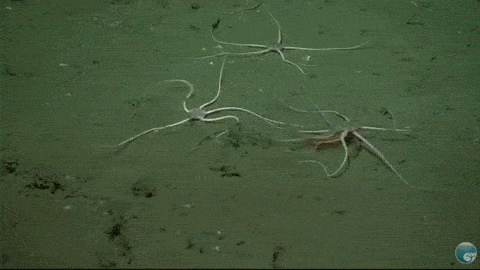
(GIF ID: two white brittle stars (with a third in the background) moving across sand by using their legs to push and drag themselves along. One appears to be carrying a red object in its mouth. End ID)

(Image ID: a basket star on a rock. The central disc in brown and has a pair of arms emerging from each segment. Each arm branches repeatedly and those branches have their own branches, resulting in a vaguely bush-like appearance. End ID)
Brittle stars are eyeless, but can detect light. Most animals, and a lot of non-animals, have some ability to detect the presence or absence of light. True vision, the ability to form images, requires more complex systems than the might-sensing cells most animals have. More specifically, it requires an eye. Or at least that's what we thought until scientists found evidence that the brittle star Ophiomastix wendtii may be able to form imaged without an eye by using its whole body as one big eye (a sea urchin, Diadema africanum) also seems to have this ability). Brittle stars are covered with light-sensing structures called opsins that can detect the presence or absence of light, but vision-forming sight requires the ability to determine how much light is coming from what direction. O. wendtii uses chromatophores to alter its color and these packets of pigment-changing cells are arranged in such a way that they may provide that directionality. In tests, O. wendtii would travel to shelter when exposed to light with a greater than change likelihood while the closely-related O. pumila would move at random when exposed to light. O. pumila lacks the types of pigment that O. wendti has, which could prevent it from being able to form the directionality needed for vision-forming sight. This is reflected in the species' behavior. O. wendtii moved toward shelter when exposed while O. pumila prefers to bury itself. The possibility for vision to exist without eyes means that a lot of animals we previously thought of as blind may actually be able to see, though probably not as well as animals with eyes.
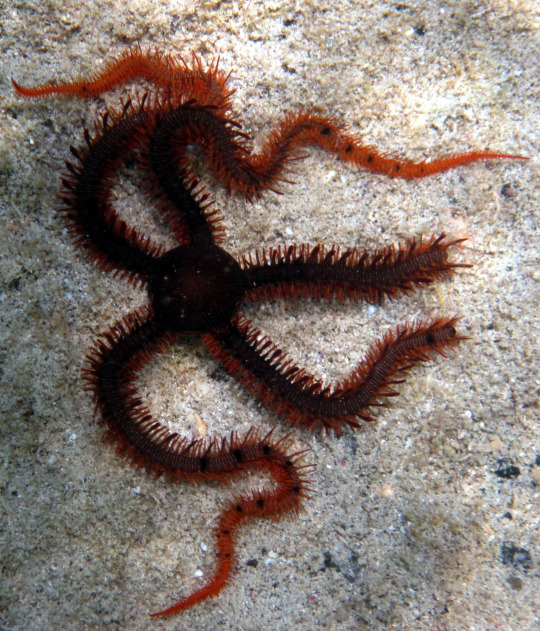
(Image ID: Ophiomastix wendtii, a red brittle star with larger bristles on its legs. Two legs are shorter and blunted, possibly having been damaged. End ID)
There are over 2,000 known species of brittle star that live all over the oceans, from shallow water to the deep sea. Most basket stars are seep-sea animals, though some shallow-water species are known. True brittle stars are mostly detritivores who crawl along sediment and eat bits of organic matter and tiny organisms. This behavior makes them seafloor engineers. Their feeding behavior stirs up the sediment, releasing nutrients and affecting the behavior of other species that rely on the sediment. Because of this, brittle stars are often highly important parts of their ecosystems. Some species follow different lifestyles. Some will target and eat sponges or coral polyps while others are active predators of small animals, filter feeders, or even omnivores that eat plant matter. Brittle stars often live in or on corals or sponges, which provide a source of protection. The relationship between star and coral or sponge may be symbiotic in some species, with the star eating parasites and pests that endanger its host. Basket stars are filter feeders that use their many branching arms to catch plankton. They need to live in places with a current as as such are often foudn on seamounts, where the underwater mountain directs the flow of water into currents. The star anchors itself to a rock, coral, or other surface and extends its arms into the current to make a net. The arms are lined with tiny hooks that catch plankton carried by the flowing water. Once caught, tube feet cover the plankton with mucus and transport it slowly to the mouth. The star will sometimes bring its arms to its mouth to speed up the process. When threatened, basket stars will bring in their legs and form a ball to protect the disc. Basket star arms are less muscular than those of true brittle stars and therefore they are not as fast. Basket stars generally get bigger than true brittle stars, with the largest species, Gorgonocephalus eucnemis, having a disc up to 14 cm (5.5 in) in diameter and an arm length of up to 70 cm (27.5 in).

(Image ID: a pale red brittle star with no bristles on its arms. It is climbing sea fan (type of coral with appearance similar to a fern), with its arms wrapped around the coral for stability. End ID)
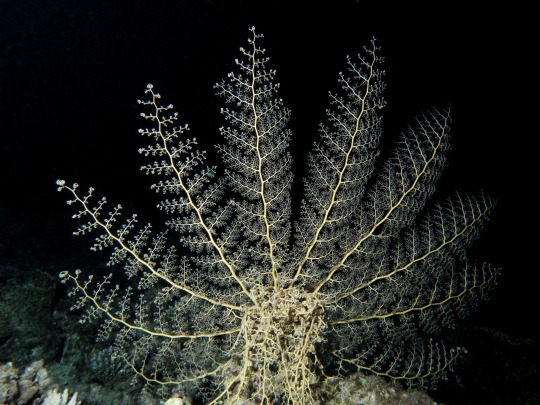
(Image ID: a basket star in feeding posture. It is on a rock with some of its arms used to support it. The rest of the arms are extended into the water column, with every branch fully extended. It looks kind of like pale white ferns. End ID).
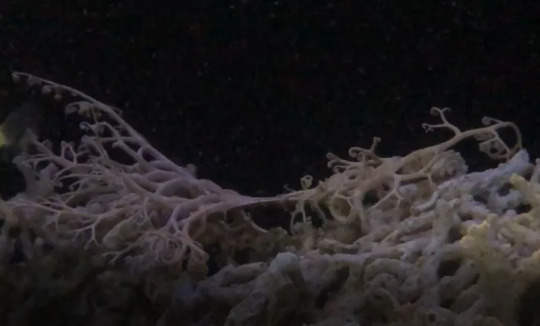
This basket star living in the St. Lucie County Aquarium in Ft. Pierce, Florida ripped itself in half shortly after being introduced to the exhibit. Esch half survived and regenerated into a full basket star. This is the only time this behavior has been seen in this species (Astrophytum muricatum). Of course, trying to rip yourself in half is a reasonable response to realizing you have to live in Florida.
(Image ID: a white basket star splitting into two halves, each with a portion of the arms. The only thing connecting the halves is a small strip of tissue. End ID)
#wet beast wednesday#brittle stars#basket stars#echinoderm#marine biology#marine life#animal facts#zoology#biology#ecology#pictures#image described
178 notes
·
View notes
Text

Night in Herculaneum. House of the Two Atriums.
Photo and text by Laura Noviello /Anima Vesuviana
The splendid domus from the Augustan period is immersed in darkness and is very evocative.
The marble threshold of the tablinum separates us from the first atrium, here we are greeted by a large cocciopesto impluvium decorated with polychrome marble slabs and with the addition of the hollow pluteus to accommodate ornamental plants. This environment had the function of a small garden, it housed the lararium for sacred worship and the most beautiful reception rooms. In one of the rooms a wooden chest was found containing an archive of wax tablets, belonging to Herennia Tertia, presumably the last owner.
(Translated to English)
80 notes
·
View notes
Text
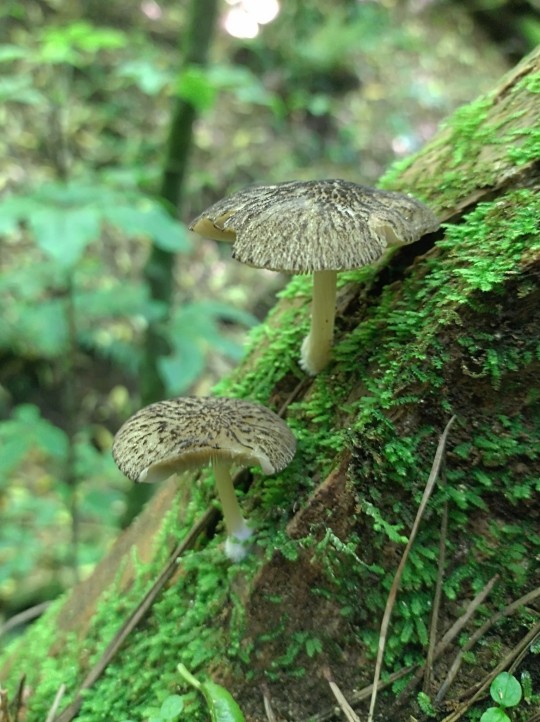
[Pluteus readiarum]
21 notes
·
View notes
Photo


Melanoleuca melaleuca. Before picking it, based solely on the cap shape & color, this mushroom looked really similar to mushrooms in the Pluteus genus. However, Pluteus has free gills (not attached to the stem) and Melanoleuca has attached gills
352 notes
·
View notes
Photo

2022_05_14
2 notes
·
View notes
Text
Taking pictures through a microscope on a rocking moving ship is hard but wanted to share a bunch of lil guys I recently found in zooplankton samples ( •◡•)

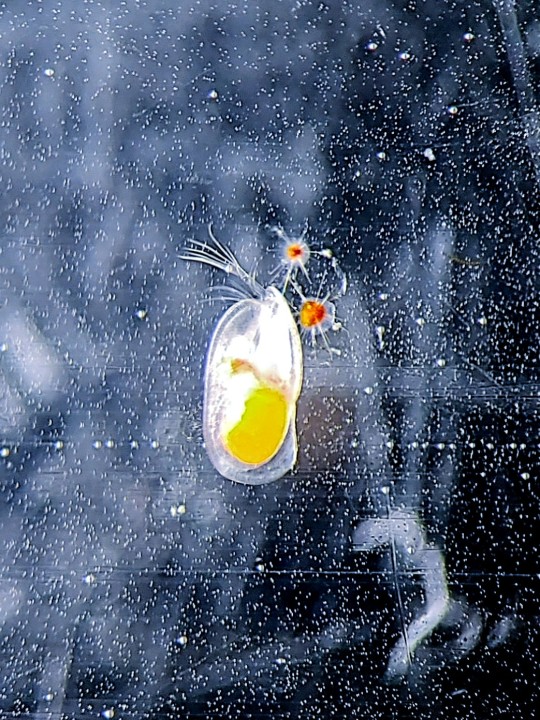

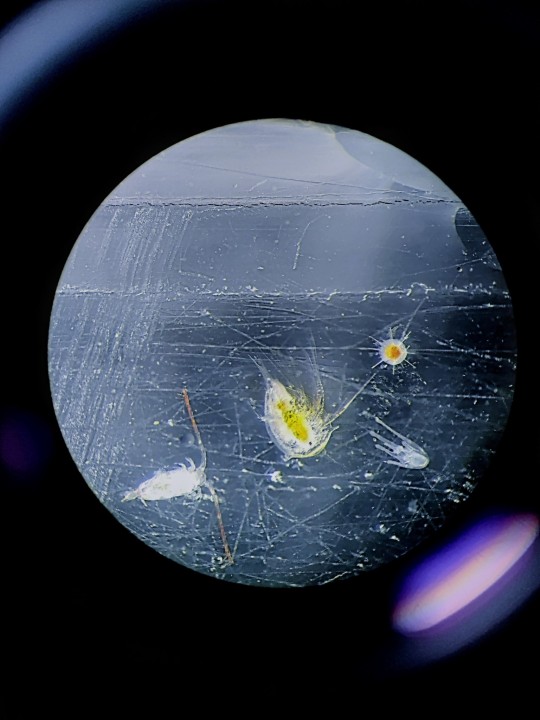


In order:
- Siphonophore with 2 copepods (Calanus sp.) stuck inside
- an ostracod & 2 radiolarians
- Calanus hyoperboreus (copepod)
- Bottom left: Calanus finmarchicus (copepod, young stage, probably CII), middle: cirriped larva (barnacle), top right: radiolarian, bottom right: pluteus larva (brittle star)
- Amphipod that I didn't have time to ID
- Termora longicornis (copepod)
#yes the radiolarians are autotrophic impostors#if you can guess what country / ocean the sample is from you get a cookie#marine biology#zooplankton#ocean#marine bio
67 notes
·
View notes
Text
plouç "screen"
plouç /pluts/ [pluts]
screen, windbreak, a moveable (often folding) barrier;
disguise, camouflage, guise, concealment, anything that serves to hide something from view;
front, cover, façade, the public-facing version of something concealed for personal or legal reasons;
act, persona, show, an intentional and false impression of oneself
Etymology: originally restricted to the first sense, a direct descendant (or via Old French, but the cognate plouce "shutter" is unattested before the twelfth century, and may instead be from Borlish) of Latin pluteus "railing; screen; bookcase". Metaphorical extension to other forms of concealment is attested from the Middle Borlish poetry of Kigman in the fifteenth century.
Jo sceu y moment veir de ty plouç souvr.
/ʒo xaw i moˈmɛnt vir de ti pluts ˈsu.vr̩/
[ʝo xaw i mʊˈmɛnt ˈvɪ.jɐ de ti pluts ˈsu.vɐ]
1s can.pst df moment see-inf of 2s.gen screen let.go-inf
I caught the moment you dropped the act.
7 notes
·
View notes